My fiancée and I think that it would be wonderful to see Franceschi House restored, but it seems that efforts over the last 20 years have been unsuccessful. We’d love to understand in more detail what has caused the house to get stuck. —N.
In February 2018, the city’s Parks & Recreation Department submitted a report to the city council with a history of the building and efforts to restore it. An excerpt:
In 1931, Alden Freeman gifted Dr. Franceschi’s residence, known as Montarioso or Franceschi House, and the surrounding acreage to the City for a public park. Dr. Franceschi is recognized for making many contributions towards Santa Barbara’s horticultural heritage and his role in Santa Barbara’s development in the early 1900s. Franceschi Park now comprises 15 acres of City parkland on the Riviera, in the foothill area above Santa Barbara. Known for providing some of the most beautiful vistas of Santa Barbara, the park features trails and picnic areas and has an old, non-ADA accessible park restroom, and an updated park caretaker residence separate from the vacant Franceschi House.
Over the years, tenants in the house included horticultural professionals, City employees, and Parks caretakers. No one has lived in the house since 1993. Currently, the interior of house is unsafe. Access is restricted to staff on an as-needed basis. City funding for maintaining Franceschi Park and the house has always been limited. Although rehabilitation of the house has been included in the City’s Capital Improvement Plan for many years, the project has never been a priority for funding.
Various options for restoring Franceschi Park and House have been explored since 1971. Due to failed attempts to secure capital and ongoing funding through City resources or public/private partnerships, the City considered demolition in 1971 and 1988. The last initiative to restore the house and park began in 2001 and ended in 2015. In 2001, the City entered into a grant agreement with the Pearl Chase Society whereby the PCS would raise the funds to rehabilitate the house and fund a $250,000 maintenance endowment. Although the City Council approved a master plan for the park in 2003, and PCS completed preliminary restoration plans for the house, the project was put on hold in 2010 due to a number of fiscal challenges.
In April 2015, the PCS concurred with City staff that the project to rehabilitate the Franceschi House should be abandoned and that the grant agreement be terminated. The [PCS] board expressed interest in partnering with the City on an alternative project in the park to honor Dr. Franceschi and Alden Freeman.
In 2015, the Parks & Recreation Department recommended to the city council that pursuing the “alternative project”—i.e., demolition of the house and the construction of something new—was the best course of action, but the city council pushed back, asking the department to keep looking for ways to make restoration work.
The Department [subsequently] secured the services of engineering consultants to complete soils engineering studies and develop and grading drainage plans. The Department also completed detailed site surveys and met with City Fire, Building and Safety, Public Works Facilities, Creeks Division and Planning Division staff to verify requirements for fire protection, building structural needs, site ADA requirements, building renovation costs, storm water permitting and the development and environmental review considerations for the various options. Lastly, Pearl Chase Society representatives and Parks and Recreation Department staff met on numerous occasions to discuss house options and site improvement needs.
The Department also developed recommendations for revisions to the Franceschi Park Master Plan, and worked with the Pearl Chase Society and other City Departments to evaluate the cost and feasibility of three options. These options include: 1) Full house restoration and Master Plan implementation; 2) Rehabilitation and preservation of the exterior of the house; and, 3) Construction of an interpretive pavilion that would integrate components of the house and honor Dr. Franceschi’s horticultural legacy.
In a perfect world, the house could be restored, but that’s expensive (estimated at $6.735 million in 2018), and maintaining it adds ongoing costs ($281,000 annually). Moreover, there’s little revenue to be squeezed from the property.
Given its small capacity of 30 people, location and limited facilities, potential revenue from use of the renovation house under Option 1 would be very limited. Assuming the use of the building 2-4 times a week for of 2-4 hours at a rate of $30/hour, annual revenue could be $12,480. This assumes that the user would also cover the full cost of custodial and monitoring services.
With support from the Pearl Chase Society, Riviera Association, and the Parks and Recreation Commission, the Parks & Recreation Department argued in its 2018 report that the best option was to tear down the building and replace it with an interpretive pavilion.
It is unlikely that the City would secure grant funding to offset the General Fund revenues necessary to support house restoration. Restoration of the house would serve a very limited number of park visitors and would not generate sufficient revenues to support maintenance costs. While house stabilization and exterior restoration [option 2] might be less costly, the Department would not recommend use of City funds for this purpose and the Pearl Chase Society does not have the capacity to raise funds for the project. Additionally, this option would not significantly enhance the visitor experience. The third option, while posing some challenges for design and environmental review due to the house’s status as a Structure of Merit, provides the most feasible approach to honoring Dr. Franceschi’s legacy while enhancing park resources and serving a broader park visitor population.
While the city council voted to go along with option 3, “no further work has been done due to short staffing and the pandemic,” explained Parks & Recreation director Jill Zachary to me. “We will, however, be restarting this project in 2021. The first step will be to secure the services of an architecture firm to develop the conceptual plan for the interpretive pavilion. Unfortunately $250,000 was cut from the project budget in May 2020 as a result of the pandemic. Additional funds will be needed to complete environmental review once a design is complete.”
If you’ve made it this far, you’ll undoubtedly enjoy the Pearl Chase Society’s 2017 video of the interior.
Got a question? Email [email protected] or text 917-209-6473.
Previous Burning Questions:
••• Why is there a train station inside this State Street storefront?
••• What’s happening with this derelict house in Summerland?
••• Is there a story behind Lucky Penny’s bell?
••• Why is there wood on some power lines?
••• What are these black beetles that are everywhere this spring?
••• Can you explain how sundowner winds work?
••• Why is there a pressure cooker attached to this utility pole?
••• What’s this concrete ramp thing on East Beach?
••• Why does “USA” get written on the street?
••• What are those poles in the ocean near the Ritz-Carlton Bacara?
••• Are people really allowed to set fires in the middle of Montecito?
••• What’s the story with the half-finished lot next to the Montecito Country Mart?
••• Is the bridge over San Ysidro Creek ever going to get repaired?
················
Sign up for the Siteline email newsletter and you’ll never miss a post.


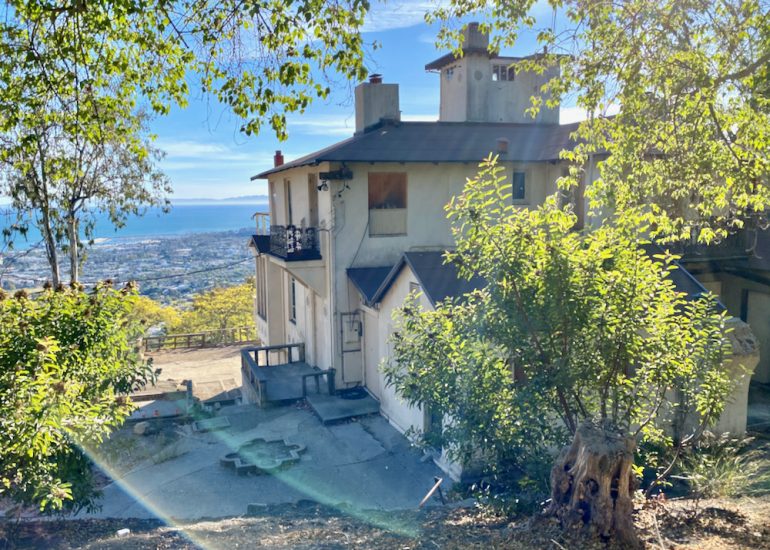
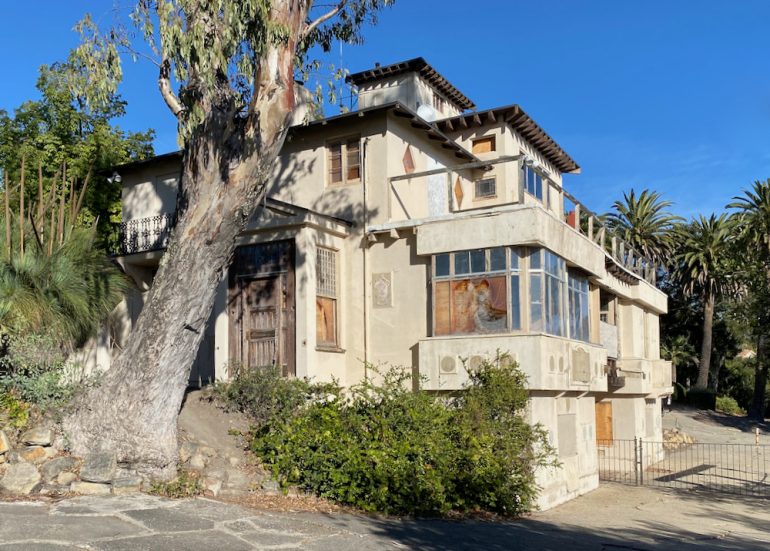
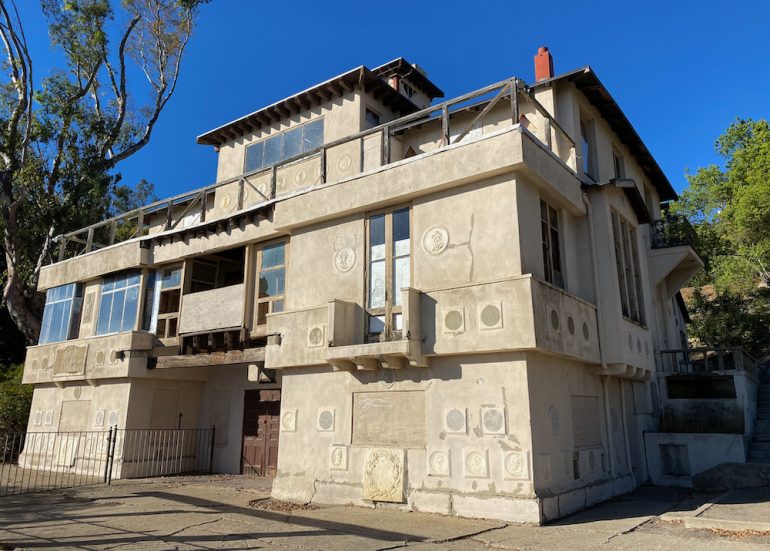
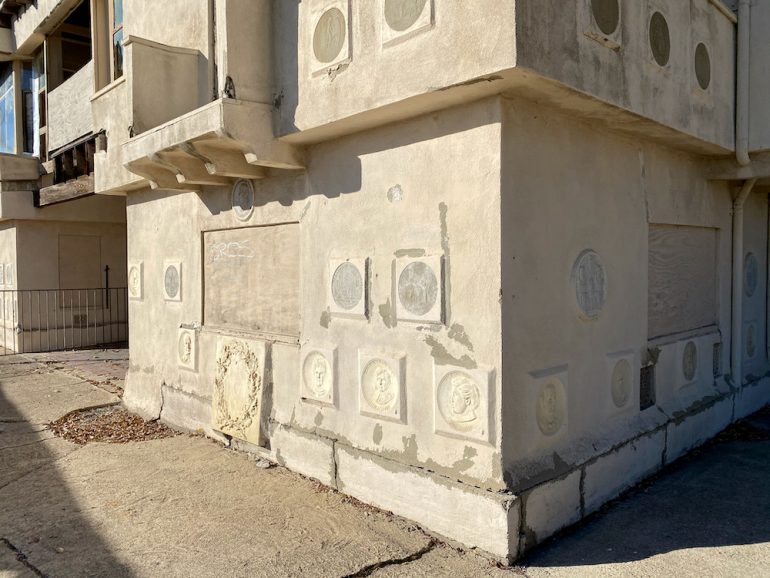
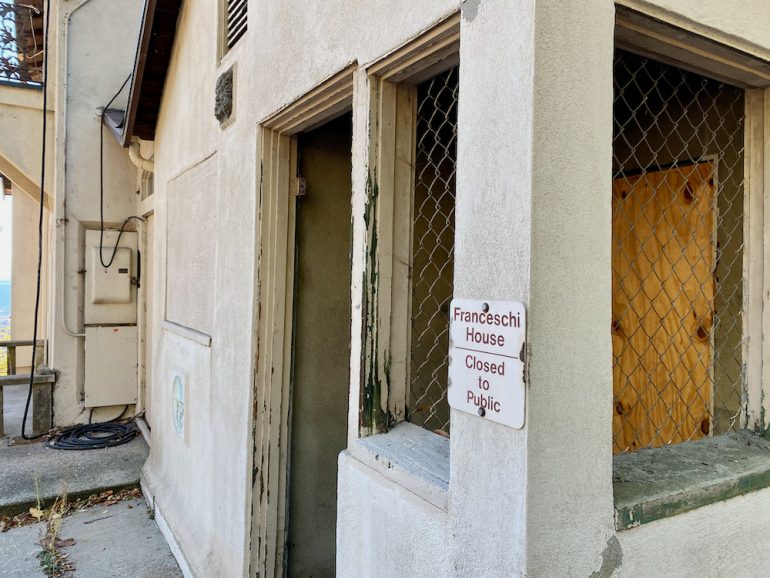
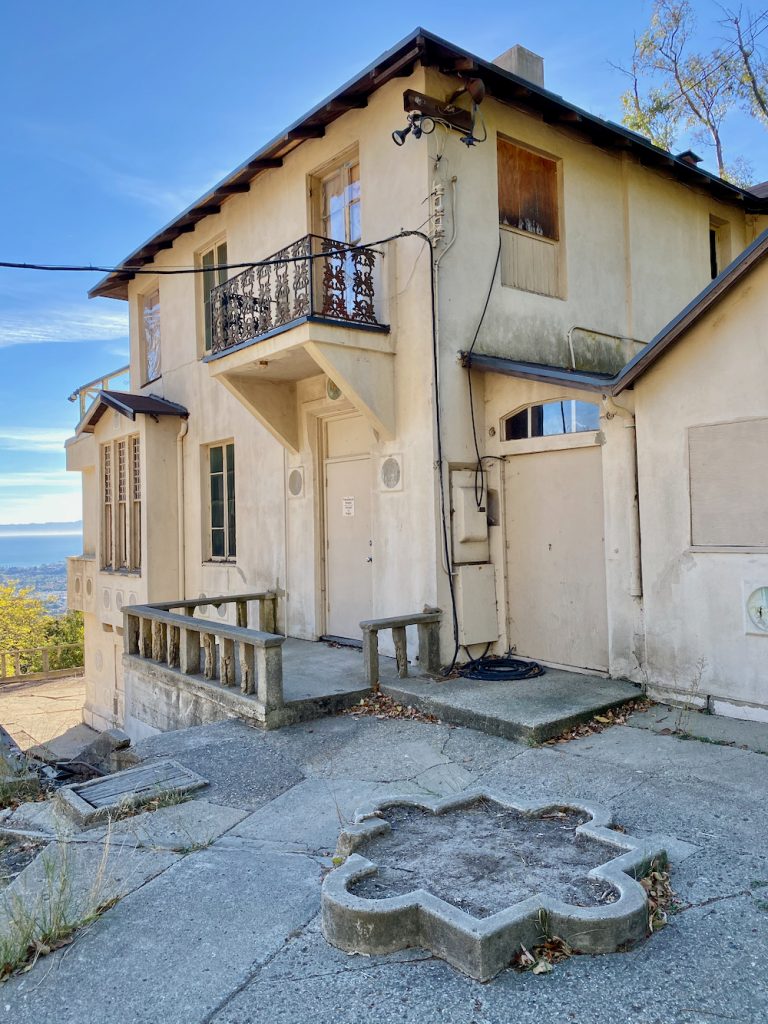







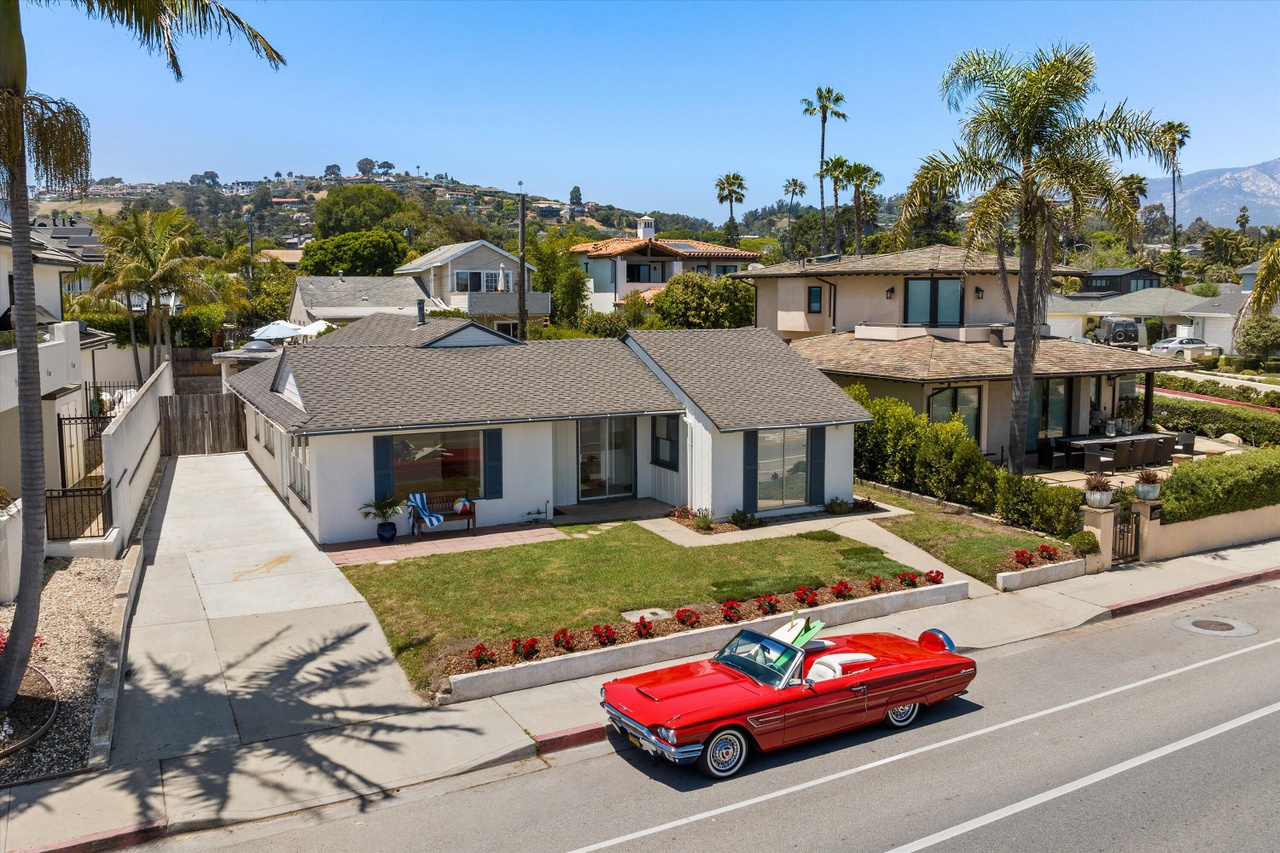



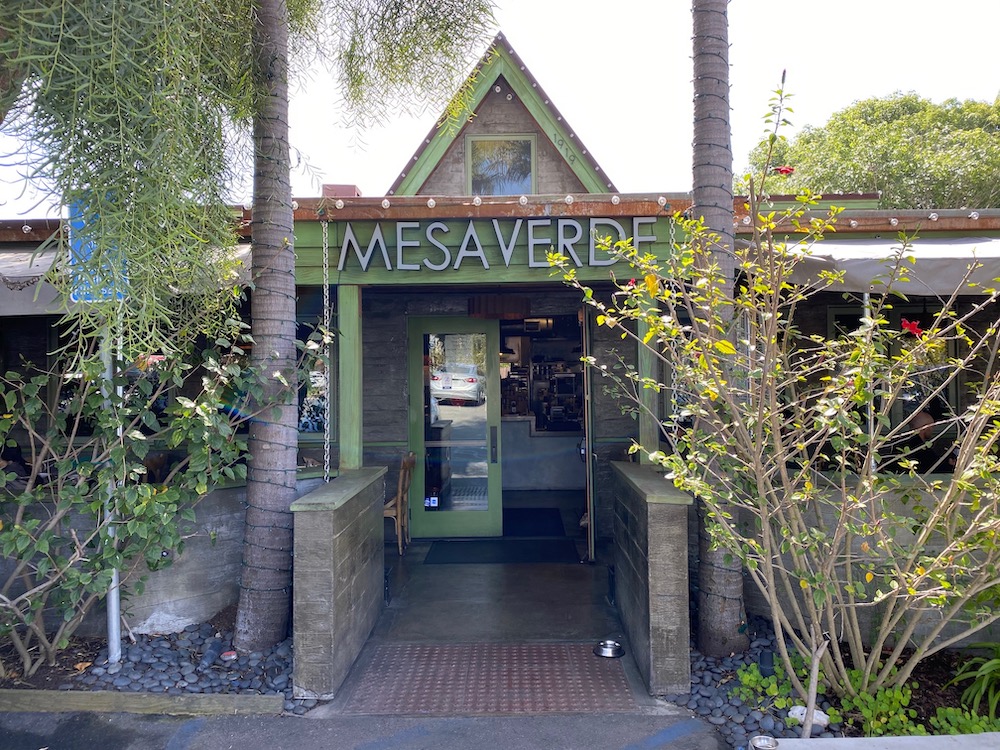
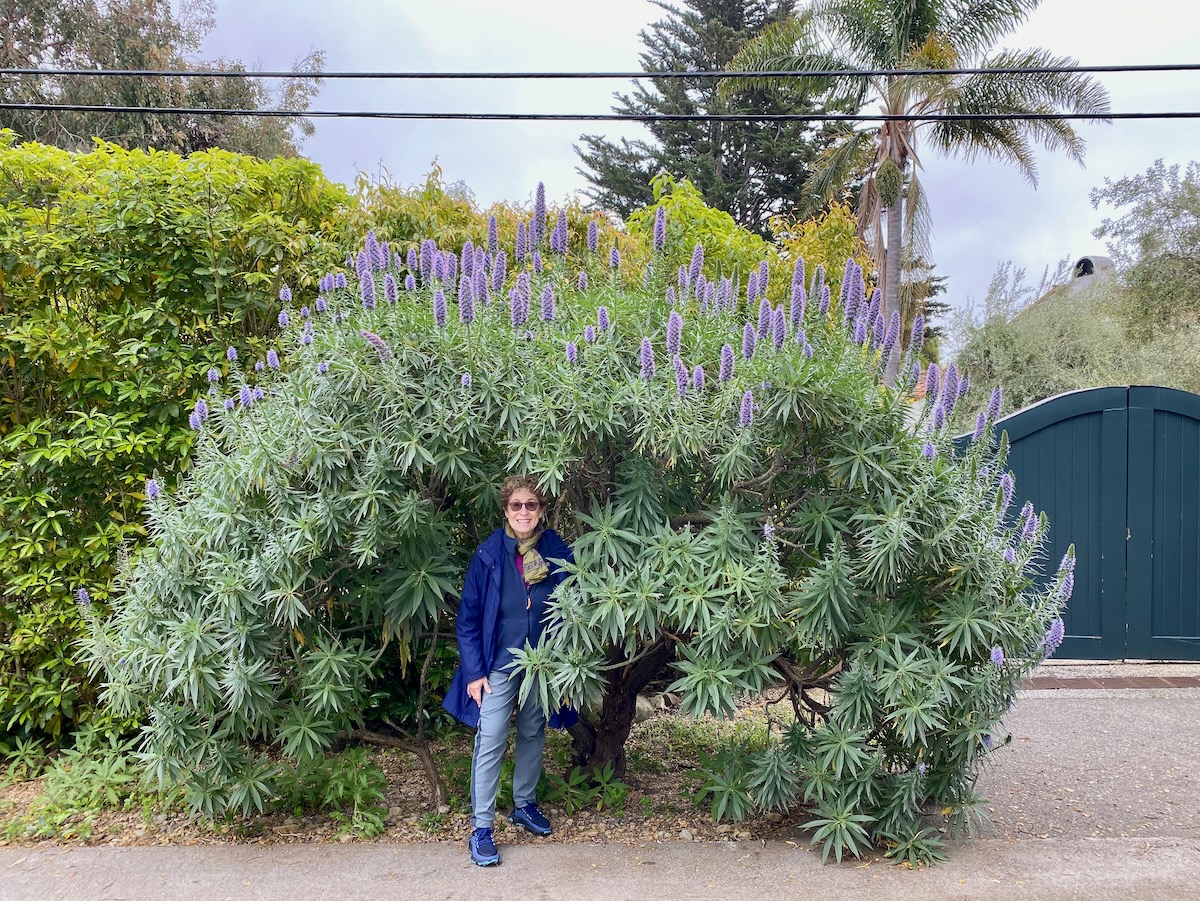

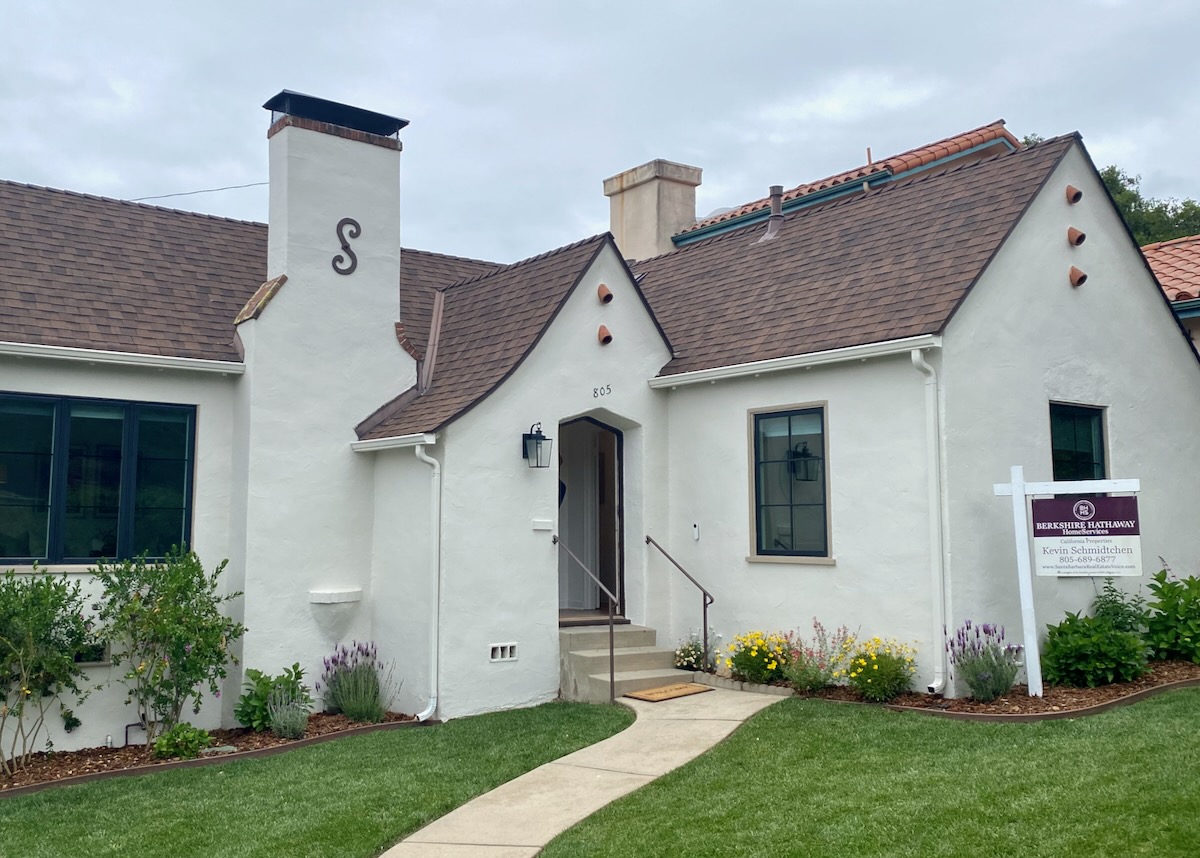
I’m hosting a walk on April 30 around the Las Tunas Road neighbhood to Franchesci Park and would like to share a little history of the park and its financial issues. May I have your permission to print about 15 copies of your article. It’s a great history of what’s stalled along the way to preserving this property.
Thx.
Jim
What an amazing house! It would be really neat if the house could be restored and turned into a restaurant, similar to The Cottage/Urth Cafe in Laguna Beach, with tables in the rooms with views and patio seating.
Tear it down. It’s a dump. A dilapidated, rotting, old, ugly house. There is nothing about that house that is worthy of restoration. Tear it down. Put up a sign. The property is the gift, the plants and trees and the views, not the house.
Nostalgia for the mediocre is Santa Barbara’s death knell.